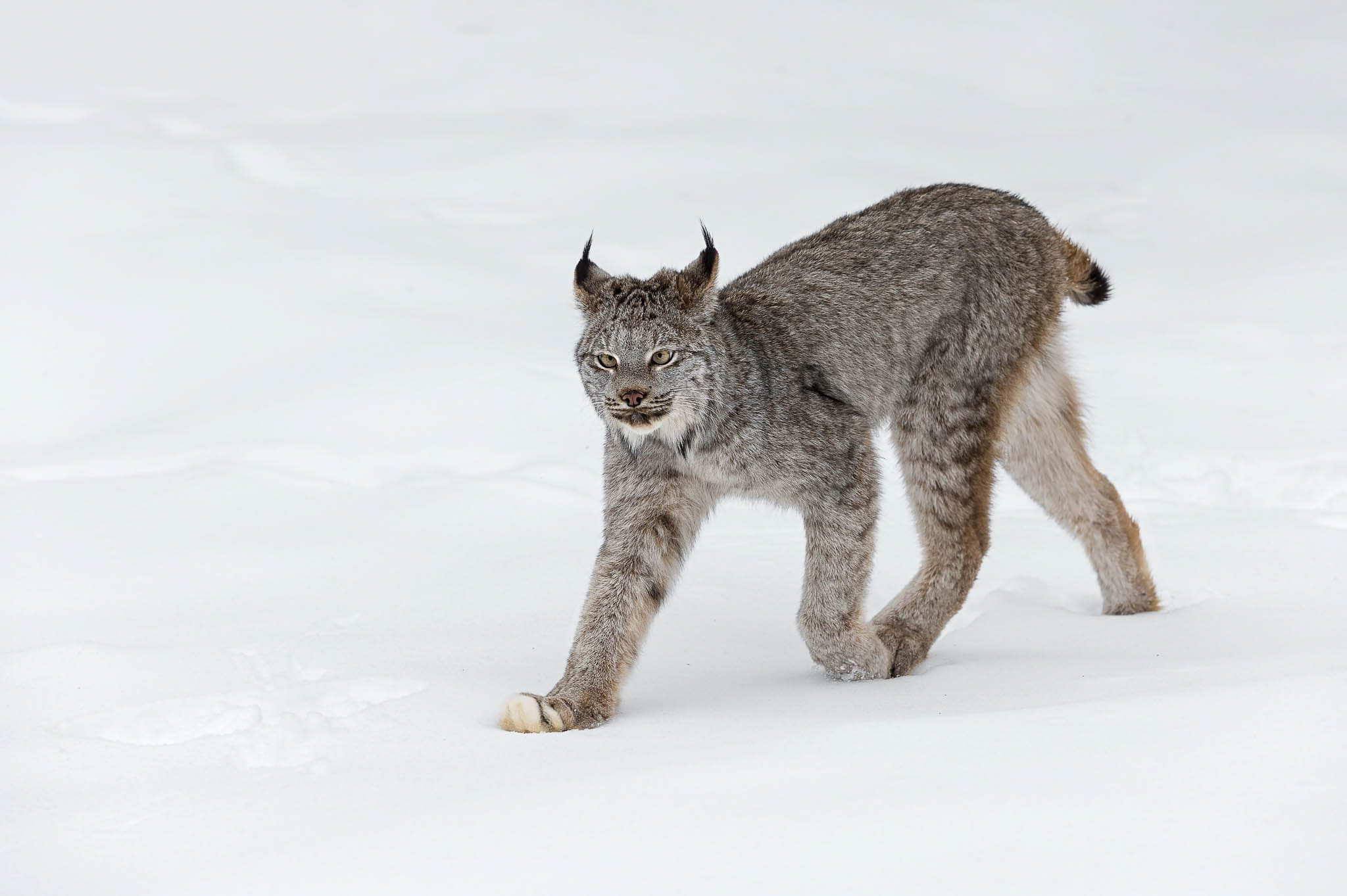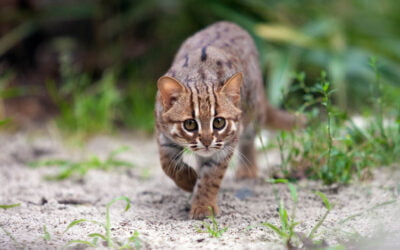Physical description of Canada Lynx
Canadian lynx are distinctive with their short tail and tufted ears. The fur is thick year-round and becomes denser on the neck during the colder months. The belly is subtly lighter in color than the rest of the body. The standard golden brown fur can occasionally be almost grey on top. Most individuals have dark spots, and the black-tipped tail is a distinguishing feature compared to Bobcats.
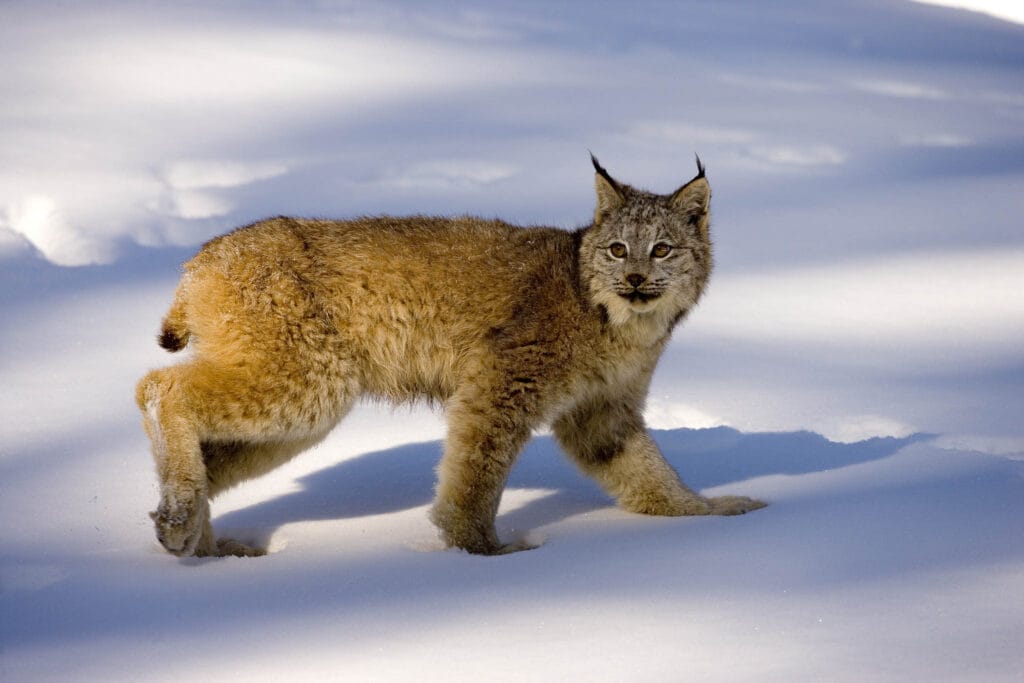
Distribution and habitat of Canada Lynx
The Canadian Lynx is found across Canada and southwards into the US. Small numbers live in Maine, but the bulk of the US population resides in the mountains in the border states of the west. They have been spotted as far south as Wyoming and Colorado but aren’t common in this area.
Canadian lynx are forest dwellers with a preference for good brush to hide amongst although they can be found in the more exposed open tundra as well.
Canada Lynx behavior
After raising the cubs to independence, the Canadian lynx resumes its solitary nature. Despite overlapping home ranges, the cats’ tendency is to avoid one other.
Hunting is a solitary affair although mothers with adolescent young are known to hunt as a team. This cooperative hunting is beneficial and more successful in open areas with less forest cover. It also helps the young to learn the necessary techniques to survive.
Lynx hunts depend on their excellent eyesight, which is perceptive enough to locate prey in the night darkness. Hearing is also important but not the primary hunting sense. The lynx stalks its prey within a couple of meters, until close enough to pounce.
Lynx are nocturnal and sleep or doze beneath bushes or dead trees during the day.
Their sensory communication and scent marking territory is akin to most cats. Vocalization and touch are used for communication to mates and between mothers and their young.
Best National Parks to see Canada Lynx
The two big rockies parks, Banff National Park and Jasper National Park have healthy populations of Canadian Lynx.
You need to put in the effort to see a Canada Lynx in the wild though. Sightings are hard to find and the national parks offer good healthy habitat.
The cross border parks of Waterton (in Canada) and Glacier (in the US) also have good populations and somewhat regular sightings.
Further North Kluane National Park and Denali in Alaska both have regular sightings and have much less people. The lack of disturbance makes you more likely to see these elusive creatures.
Superior National Park in Minnesota is a lesser known spot, but has large numbers of sightings.
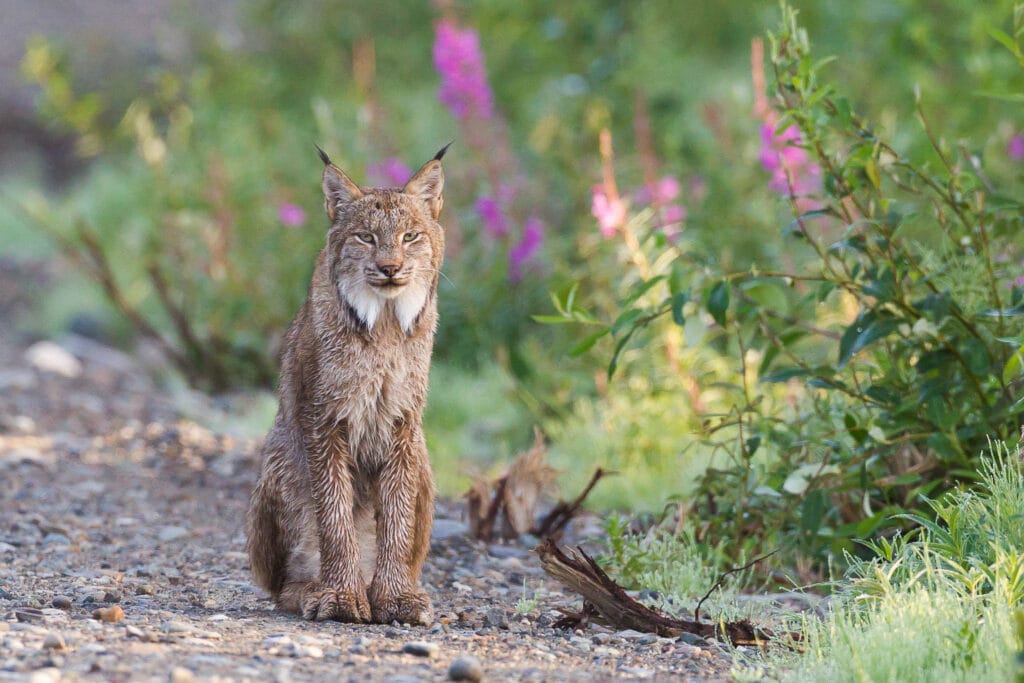
What do Canada Lynx eat?
Canadian lynx are carnivores. In the winter, they kill deer and other larger animals that they usually wouldn’t pursue. Predominantly, this is due to the weakened state of such animals in the cold weather. It has been observed that they will even take advantage of injured male elk during the rutting season to snag an easy meal. Lynx are also known to scavenge meat.
However, hares are a staple part of their diet. Specifically the Snowshoe hare. If hares are not readily available, smaller prey, such as rodents and birds form part of the lynx’s diet.
Mating and Parental care of Canada Lynx
Canadian lynx have one litter per year, raising their cubs until the next mating season. With usually 2 or 3 kittens per litter, Mothers are solely responsible for their care. Whilst nursing the cubs for up to five months, they will supplement their diet with some meat before the kittens are fully weaned.
Cubs remain with their mothers for the first year, learning to hunt and, in some instances, participating in the hunt. After a year, the family separates although the kittens stay together a while longer. It takes 2 to 3 years to reach sexual maturity, at which time territories are established.
The ranges of Canadian lynx overlap with one another. Whilst female ranges don’t overlap each other, males generally include those of multiple females and sometimes share their outer regions with other male territories. It is commonly thought that the male has multiple partners within his home range.
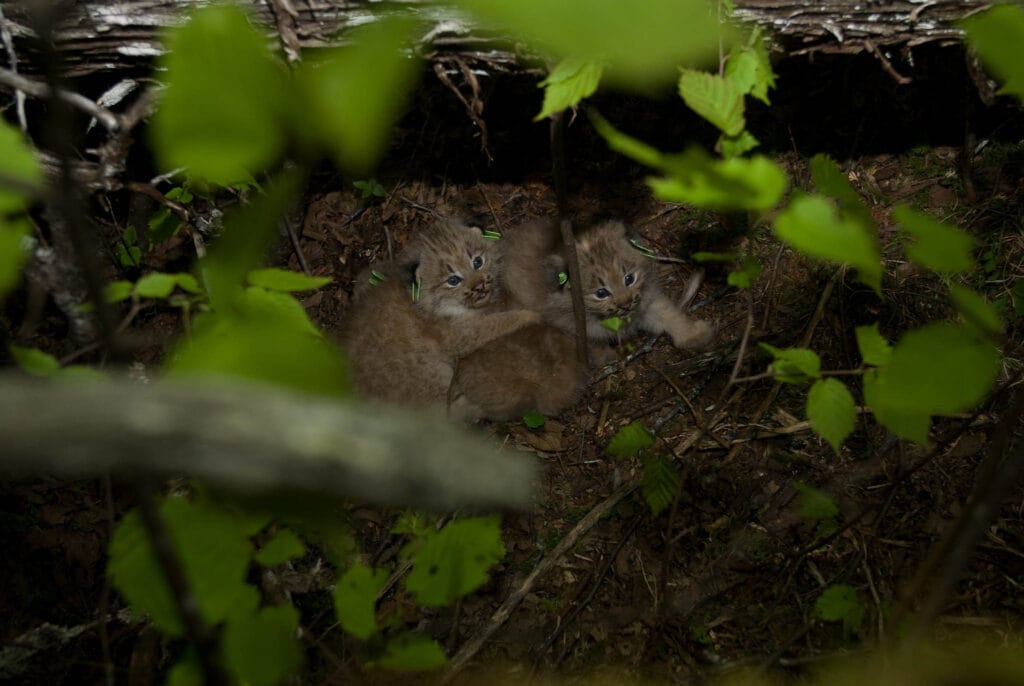
Who preys on Canada Lynx
The Canadian lynx has no known predators. However, larger predators will opportunistically prey on the young.
How long do Canada Lynx live?
If the Canadian lynx survives the harsh first year of life, they can live until about 15 years in the wild.
Canada Lynx and their ecosystem
Similar to most predators, the lynx are responsible for maintaining the populations of their prey species. In a predator-prey cycle, there is a distinct connection between the populations of the Canadian Lynx and the Snowshoe hare, which demonstrates how they interact and influence each other’s growth or decline.
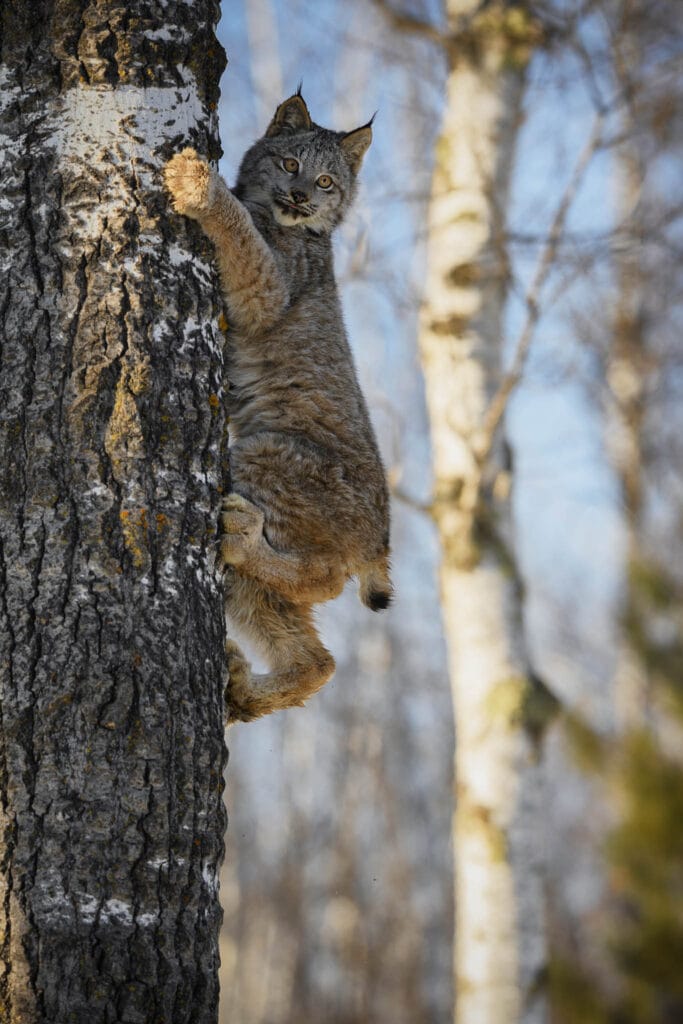
Impact of Canada Lynx on the human economy
The largest threat to Canadian lynx is a decline in the population of their principal prey, the snowshoe hare. Currently, the snowshoe hare population is reasonably stable, so lynxes have a relatively secure food source.
Since the formation of the Hudson’s Bay Company in the 1600s, lynx have been hunted extensively for their fur. Presently, this still occurs and is one of the most significant threats to their survival after the loss of their primary food source.
In contrast with other cats, Canadian lynx don’t endure habitat loss and rarely live in close proximity to humans. They are unlikely to prey on small livestock, which minimizes human-cat interaction.
Conservation status and human impact on Canada Lynx
While lynx are not threatened, they are part of the CITES list, appendix 2, which regulates trade in the animals and their parts (fur) to ensure the species’ survival. They are probably the most numerous member of the lynx family, which includes the Eurasian Lynx, Bobcat and the severely threatened Iberian Lynx.
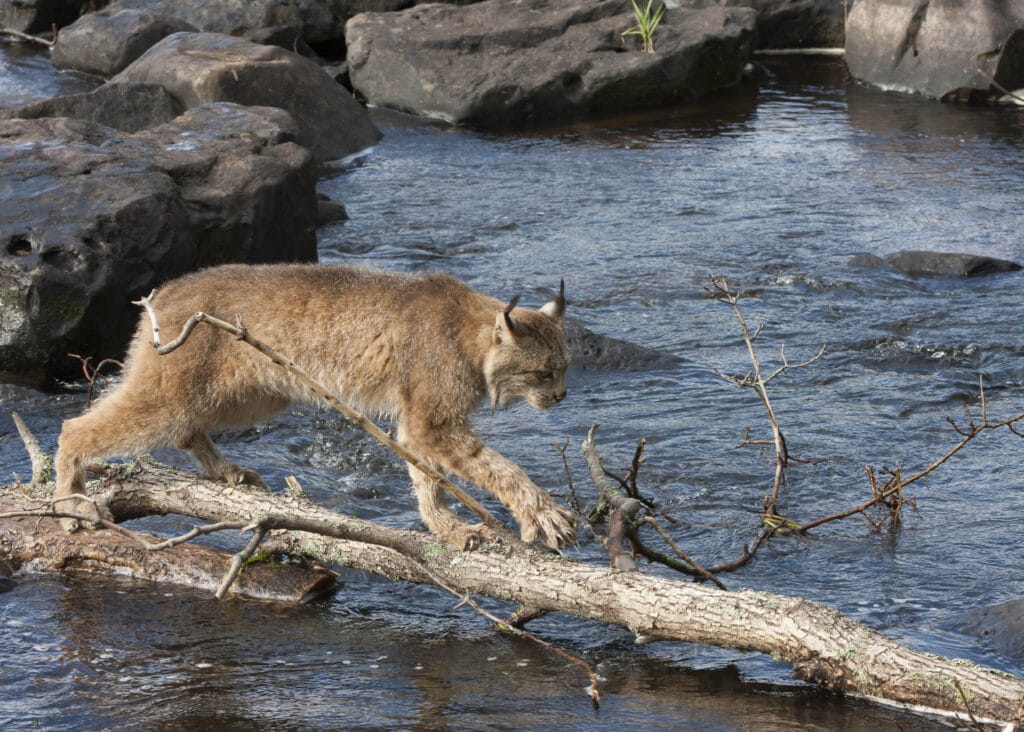
Other important information about Canada Lynx
The Canadian lynx is the only cat with a direct correlation between prey and predator populations. Consequently, population growth and decline between both species is connected to the lynx fertility rate. Hare numbers increase when lynx numbers decrease, then lynx litters grow in size. More cubs and better survival rates lead to a decrease in hares.

